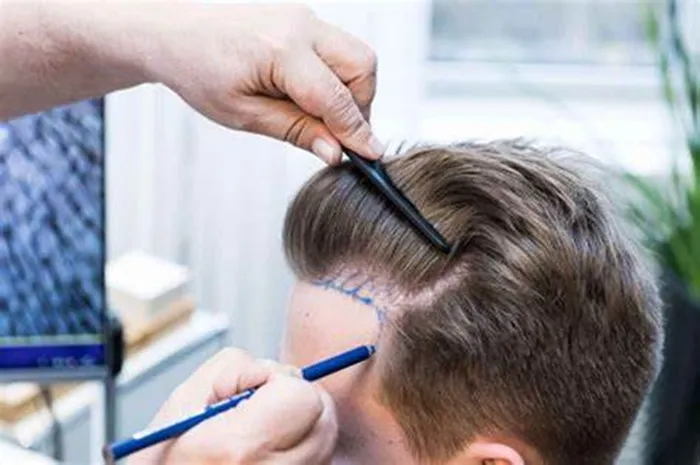Hair transplantation, particularly Direct Hair Implantation (DHI), has become a transformative solution for individuals experiencing hair loss. One of the key aspects of any hair transplant procedure is the donor area—the part of the scalp from which healthy hair follicles are harvested. Understanding what happens to the donor area after a DHI hair transplant is crucial for patients to manage expectations and ensure proper aftercare. In this article, we will delve into the specifics of the donor area post-DHI, including its appearance, recovery, and long-term implications.
What Is the Donor Area?
The donor area is typically located at the back and sides of the scalp, where hair follicles are naturally more resistant to hair loss. These follicles are harvested and then transplanted to the recipient area (usually the front or top of the scalp) to restore hair density and create a natural-looking hairline.
Appearance of the Donor Area After DHI
Immediate Post-Procedure
After the DHI procedure, the donor area will have small puncture marks where the follicles were extracted. These marks are typically very small and may appear as tiny red dots. Unlike traditional Follicular Unit Extraction (FUE), where the extraction sites are more noticeable, DHI uses a specialized tool (the Choi Pen) that minimizes the size and visibility of these marks.
Healing Process
The healing process in the donor area is generally quick and uneventful. Within a few days, the redness and any minor swelling will subside. The tiny puncture marks will gradually heal and become less visible over the next few weeks. By the end of the first month, most patients will notice that the donor area has healed well, with minimal scarring.
Long-Term Appearance
In the long term, the donor area will continue to heal and blend with the surrounding scalp. The small extraction sites will become virtually undetectable, especially when the hair is grown out. Most patients report that the donor area looks and feels normal after a few months, with no significant changes to the overall hair density or appearance.
Recovery and Aftercare
Proper aftercare is essential to ensure optimal healing and minimize complications in the donor area. Here are some key points to consider.
Avoiding Strenuous Activities: Patients are advised to avoid strenuous activities, such as heavy lifting or vigorous exercise, for at least a week after the procedure. This helps prevent any unnecessary strain on the donor area.
Scalp Care: Keeping the scalp clean is important, but patients should avoid scrubbing or applying excessive pressure to the donor area. Gentle washing with a mild shampoo is recommended.
Sun Protection: The donor area should be protected from direct sunlight for at least a few weeks after the procedure. Wearing a hat or using sunscreen can help prevent irritation and promote healing.
Medications: Following the surgeon’s instructions regarding prescribed medications, such as antibiotics or anti-inflammatory drugs, is crucial to prevent infection and reduce swelling.
Potential Complications
While complications are rare, they can occur. Patients should be aware of the following potential issues:
Infection: Although uncommon, infection can occur at the donor site. Signs of infection include increased redness, swelling, pain, or discharge. Immediate medical attention is necessary if these symptoms are present.
Scarring: While DHI minimizes scarring, some patients may experience minor scarring at the extraction sites. This is usually temporary and can be managed with proper aftercare.
Numbness or Sensitivity: Temporary numbness or sensitivity in the donor area is common and typically resolves within a few weeks.
Long-Term Implications
The donor area in DHI hair transplantation is carefully selected to ensure that the harvested follicles are from a region with a high density of hair and resistance to hair loss. This means that the donor area itself is less likely to experience significant hair loss over time. However, it is important for patients to maintain a healthy lifestyle and follow any recommendations from their hair transplant specialist to preserve overall scalp health.
Conclusion
The donor area is a critical component of the DHI hair transplant process. Understanding its appearance, recovery, and long-term implications is essential for patients to manage their expectations and ensure proper aftercare. While the donor area may have small puncture marks immediately after the procedure, these typically heal quickly and become virtually undetectable over time. With proper care and follow-up, patients can expect a smooth recovery and minimal long-term effects on the donor area.
If you are considering a DHI hair transplant, it is important to consult with a qualified hair transplant specialist who can provide personalized advice and ensure that the procedure is performed with the highest level of precision and care.
Related topics:
DHI Method: All You Need to Know
DHI Hair Transplant Before and After: What You Need to Know


